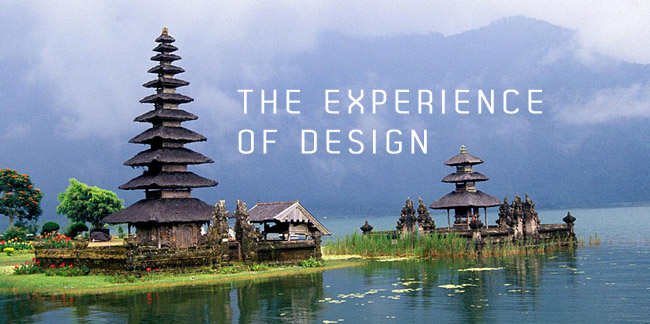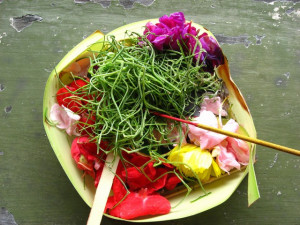The other day I was sitting in a shuttle bus in Bali, gazing out the window as we stopped at a set of traffic lights. I noticed a series of bronze statues on the median strip, each of which resembled some kind of Hindu god posing in various positions and pulling faces for passersby. The statues were positioned as if the wind had changed and what was captured was a ridiculous moment occurring in some ancient world.
I realised I hadn’t noticed them before, although they extended for miles on this particular main road, and on second thought… Bali’s streets feature a lot of environmental art and are prone to extravagant decorum of all sorts.

When you think of designing something, it’s common to think about ‘purpose’ as playing an important role in conceptualising a new object, environment or piece. What will it be used for and how can this be achieved in the most aesthetically pleasing manner for the user to enjoy? But initial design thoughts should go far beyond purpose and the practicalities of making something ‘work’ (things like the design principles that we all learn in design school). We should also begin to discuss real-time experience and the way in which human lives can effect and be affected by the objects and artefacts in their environment.
My experience of Bali was mine only, and it was experienced thus based on all the moments and everything I saw that lead up to the moment I saw these statues and beyond. Overall, I found the ornamentation and decoration of the island to be interesting, although a part of me sensed that my surroundings were a little bit un-genuine and at times contrived. So you could say that the design of my environment influenced me (subconsciously) to experience Bali as ‘X’.
But what if the statues had dull expressions, or were even a different colour? Would I have even noticed them? And would they then have missed out on being added to a ‘pool’ of unconscious imagery and environments that made up my overall experience?
Now let’s introduce a Balinese Hindu who has lived in Bali all his life. His love and pride for the island goes beyond that of which I could ever experience unless I lived as him, in his shoes. When he drives past these statues of a morning on his way to work he’s reminded of the characters in the dances and stories of his childhood and the smell of incense that has always burned at the front door to his aunt’s house – where he calls home. This smell is intertwined with his religion and his personal perception of his place in the world. And while he doesn’t even think about it consciously these statues evoke in him a familiarity and contentment with his own existence. They remind him that Bali is where his heart lies. This man’s experience is ‘Y’.

X and Y are only two of a myriad of different experiences that can occur in Bali. And because of perceptions, culture, religion, socialisation, and even genetics, we will all take something different from these statues on the highway – although we will rarely even know it. Many people who share similarities in all of the above with myself will probably have a similar experience in Bali to ‘X’.
This is the experience of design. Who will know if these statues were designed for tourists to feel that ‘sense of culture’, or for locals to ‘feel at home’. Who will know if the artist was supposed to achieve just one or both experiences in designing these objects. But what’s important here is in acknowledging that beyond the practicalities of design, one must really understand the individual user experience.
This does not refer only to the more traditional ‘user experience’ in a macro context, which takes into account how a ‘user group’ will use something and then averages out the results to design for the most likely scenario. This method really comes down to finding the best answer to a more functional problem. But I want to know is, WHO will these people be? What do they care about and why? Which moments in their life brought them to this moment where they are now experiencing this moment that I’ve created, and how does this alter their experience?
Leave a Reply